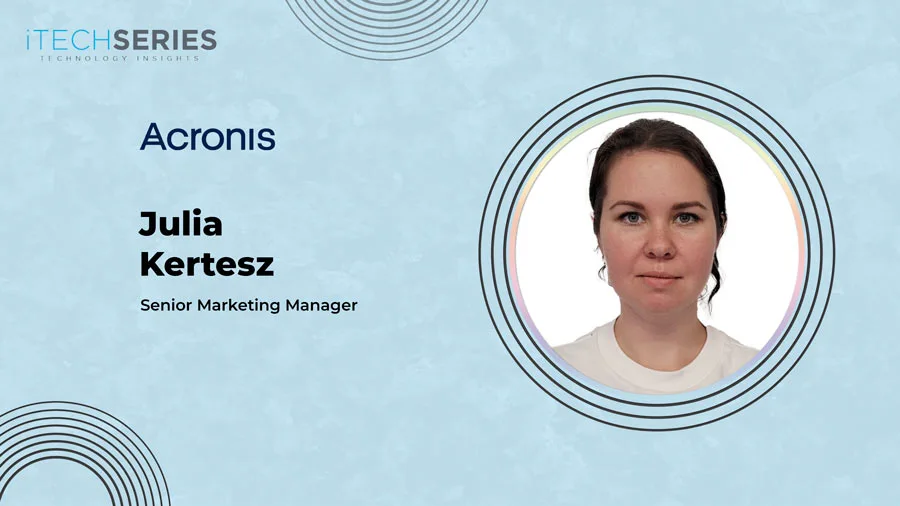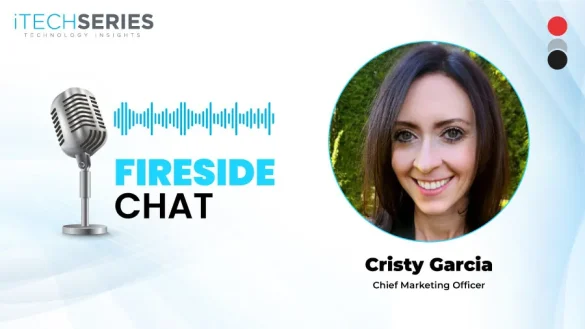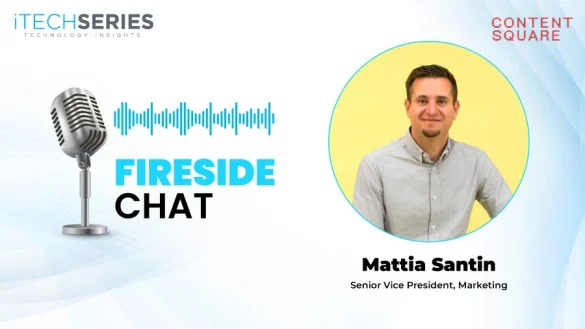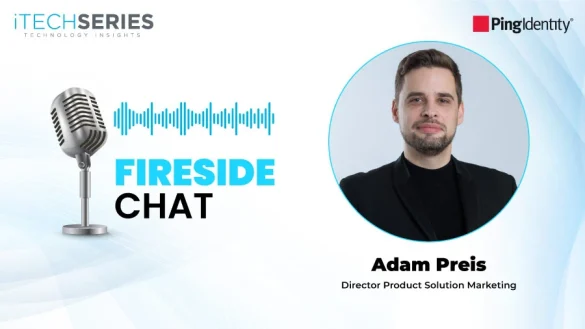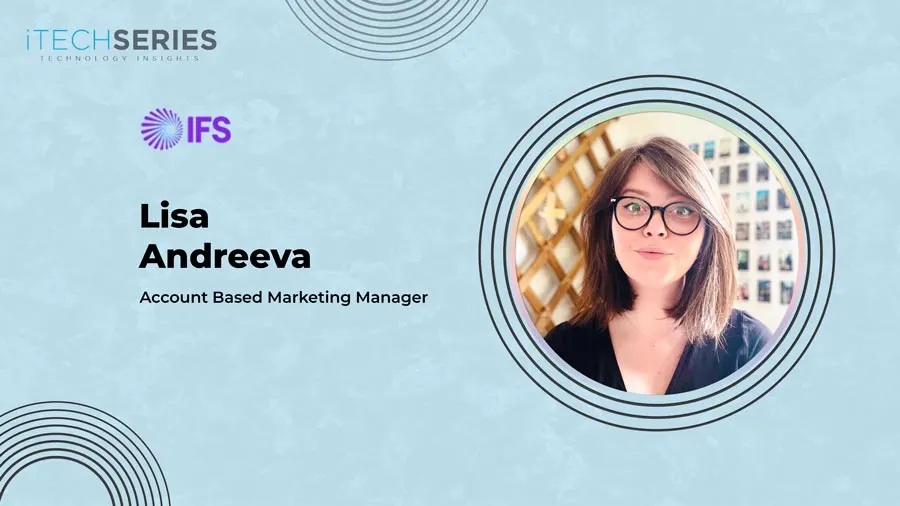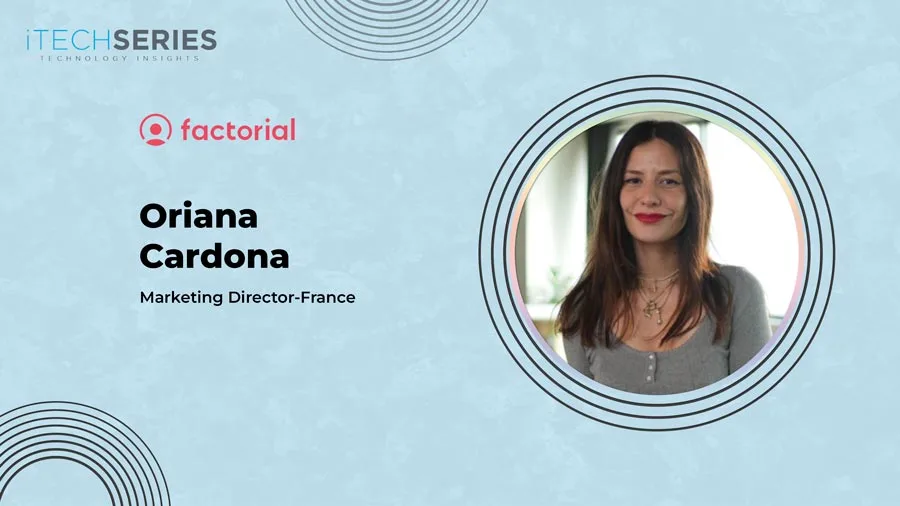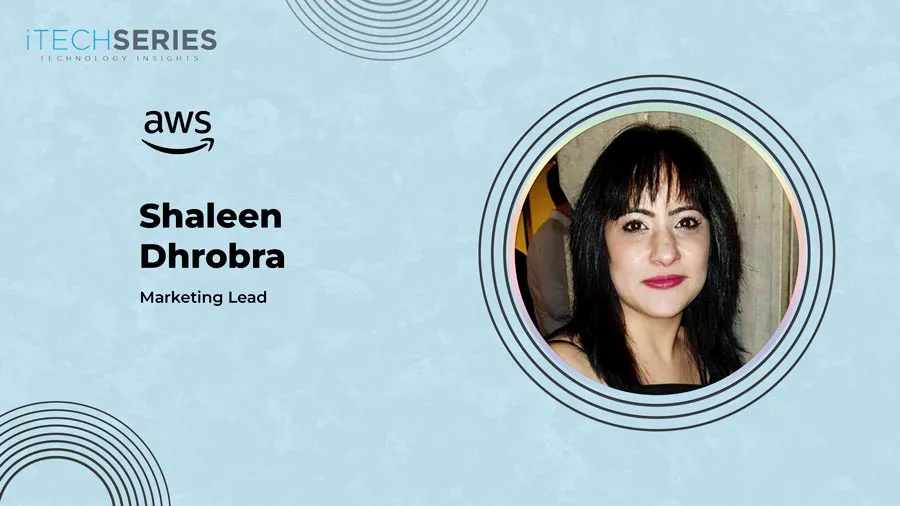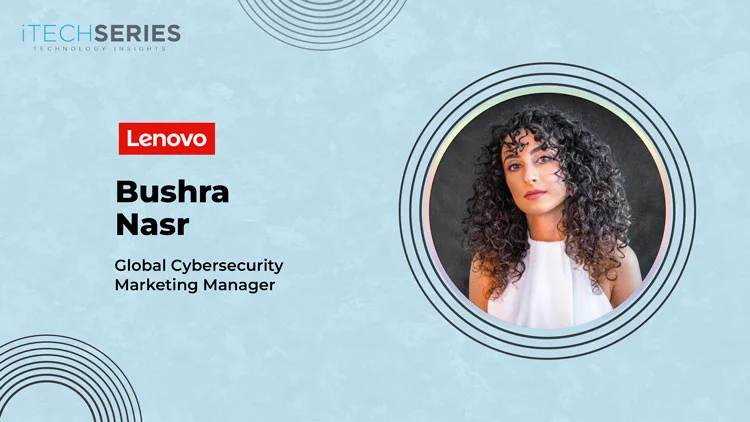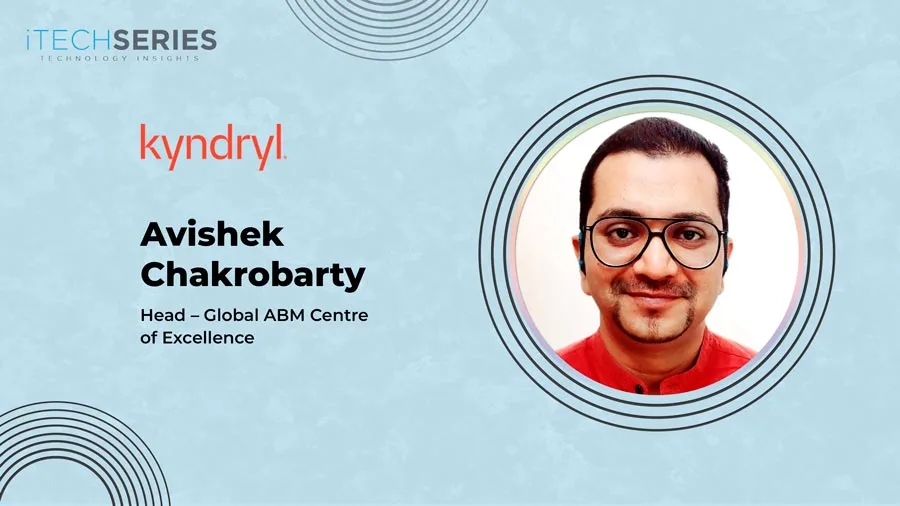Julia Kertesz, Senior Marketing Manager at Acronis, shares her journey from spearheading marketing for a family business to crafting high-impact campaigns for international corporations. In this conversation, she dives into aligning marketing and sales, balancing global brand consistency with local relevance, and the transformative power of AI in modern B2B marketing.
Welcome to the interview series, Julia. Could you tell us about your journey to becoming a marketing leader?
Hi, thank you for having me here!
My journey to becoming a marketing professional has been long and full of learning.
I started working early, as I was involved in a family business from high school through university. Being part of a family-run company, I naturally took on responsibility, supporting operations, helping with management, and eventually leading marketing. I also had the chance to apply my university learning in real time. For example, I wrote an analytical report aligned with quality standards (similar to ISO 9001), combining academic and practical experience. As a result, the company received a state award for management quality. That early exposure taught me to take initiative, act on knowledge while it’s fresh, and approach tasks with purpose.
Later, I moved into sales and marketing roles across SMBs. I worked hard, often beyond my job description, driven by a hunger for knowledge and well-rounded experience. Before entering the corporate world, I was the sales and marketing director at a hotel chain. All the companies I worked for had under 50 employees, so there were no strict department lines, we did everything: strategy, lead gen, closing deals, and partner enablement.
That environment gave me a strong, hands-on understanding of how closely marketing and sales must work together to drive results.
When I moved into a large international corporation, I brought that mindset with me. Today, I lead marketing campaigns for diverse audiences, with a core focus on operational technology (OT) industries.
I’ve always believed real growth comes through learning. That’s why, in addition to my master’s in business administration, I completed a cyber-resilience course to better understand the challenges professionals face from compliance and incident response to ransomware and business continuity. In a few weeks, I’ll be taking part in penetration testing training focused on OT environments, and I’m genuinely excited to keep learning.
What’s your approach to aligning marketing and sales teams when launching integrated campaigns across multiple markets?
For me, alignment between marketing and sales isn’t just important; it’s foundational.
I typically work on campaigns across regions like NAM, Japan, DACH, and others, where customer expectations, regulations, and buying behaviours vary significantly. So our alignment starts early in the planning stage: we discuss campaign goals, the target audience, common objections they encounter, and what types of assets or tactics perform best locally. These conversations help shape campaigns that are truly relevant and ready for local execution.
Once the campaign is live, I stay close to performance metrics and feedback loops. I regularly check in with sales teams to hear what’s working, what’s not, and where they might need additional support, like follow-up materials, localized content, or refreshed messaging.
Over time, I’ve tested different collaboration models, but the most impactful results always come when global and regional marketing and sales teams work closely together from day one. That synergy of knowledge is what drives stronger engagement and higher conversion.
Having run marketing programs across different regions (US, UKI, DACH, and APAC), how do you strike the right balance between global brand consistency and local market relevance?
That’s a great question!When running marketing programs across multiple regions, I always start with the foundation of global brand consistency: the core messaging, visual identity, tone of voice, and values should remain strong and recognizable across all markets. This consistency builds long-term trust and reinforces brand equity, no matter where the customer is.
At the same time, each region brings its own unique context: different levels of digital maturity, industry challenges, cultural nuances, content preferences, and regulatory requirements. That’s why my approach is to create a solid global campaign framework and then work closely with local teams to adapt it for their specific market realities.
That might include adjusting examples to reflect local industries, selecting key visuals that resonate regionally, highlighting case studies from familiar and respected customers, or translating content not just linguistically but culturally (with valuable input from local teams). It’s also important to tailor messaging, for example, to reflect relevant compliance frameworks like NIS2 in Europe, HIPAA in the US, or 2G3M in Japan. To sum up, I see it as a balance between structure and flexibility: setting a clear strategic direction globally while working closely with local teams to adapt campaigns in a way that connects with their audience.
“Marketing’s role isn’t just to generate leads but to create a pipeline of future customers who are already familiar with value when the time to buy comes.”
Can you share one of your most impactful or memorable marketing campaign experiences?
Absolutely! There are many ways to define impact, from engagement to pipeline influence, but one of the most memorable campaigns for me began back in December 2022.
Like many marketers, I regularly collaborate with subject matter experts. One day, my colleague James floated an idea about the rising relevance of ChatGPT and the implications of evolving cyber threats. I was inspired: it was timely and relevant, and I knew it would resonate with our audience. And it absolutely did.
We quickly mobilized a multi-touch campaign with a top-of-the-funnel webinar series at its core to drive awareness. The response exceeded expectations: over 3,700 registrations for that event.
To nurture prospects further along the journey, I proposed a middle-of-the-funnel tactic as part of this campaign: an incident response planning workshop, supported by actionable templates and checklists. This initiative had a direct sales impact, attracting buyers who were already actively exploring solutions. As a result, it led to some of the fastest deal conversions of my marketing career.
We ran this campaign for about a year, and it proved highly effective because we focused on relevant topics and moved quickly when new opportunities emerged while building a solid funnel-aligned plan that reflected the interests and needs of our audience.
What are some of the major challenges and opportunities for marketing in the cybersecurity space?
Today, one of the biggest challenges in tech, including cybersecurity, is the complexity of the solutions we market. In many cases, you’re not just selling to one person. You’re engaging with a committee of decision-makers from various departments, each with different priorities, levels of technical understanding, and expectations. That makes it critical to create messaging that resonates with different audiences, from engineers to executives, without losing clarity or consistency.
Another challenge is how buyers behave today. Most of the journey happens long before a prospect ever talks to sales. Buyers do their own research, shortlist vendors, read peer reviews, attend events, and consume content on their own terms. So, as marketers, we need to show up early and not with a pitch, but with value. That’s where I see a real shift toward brand-to-demand marketing. I often speak about this in my LinkedIn blog: modern B2B marketing isn’t just about generating leads; it’s about building credibility and trust long before someone fills out a form.
At the same time, there’s a huge opportunity in this space. Tech is fast-moving, rich in innovation, and constantly evolving. That means there’s always something new to talk about: a new use case, a new regulation, or a shift in the market. It gives marketers the chance to be true enablers: simplifying complex topics, connecting people with the right solutions, and helping businesses move forward with confidence.
How do you approach managing the marketing budget across different channels, and which metrics do you monitor most closely to ensure a strong ROI?
In B2B tech marketing, especially when working across different regions, managing spending is always a balance between short-term performance and long-term brand building.
When allocating budget across channels, I start by mapping marketing activities to the full customer journey and aligning those activities with regional goals and market maturity. I also set clear benchmarks and analyze channel performance at regular intervals, because in B2B, especially with longer sales cycles, what doesn’t perform in one quarter may prove its value later, particularly for larger or more complex accounts.
In terms of metrics, I closely track MQL to SQL conversion, deal size influence, and conversion to closed-won opportunities. These KPIs help measure not just volume but also the quality and sales readiness of leads, which reflects how well campaigns, messaging, and targeting are resonating with the right audience.
In markets with long buying cycles (often 6–12 months or more), it’s also important to use multi-touch attribution to understand the impact of marketing over time. I also combine this data with qualitative feedback from sales, especially when we’re focused on high-value accounts, because it gives context that numbers alone can’t provide.
Finally, I believe in consistent investment in brand-building, even when ROI isn’t immediate. Educating the market, building credibility, and delivering value early in the journey all help shorten sales cycles and increase win rates in the long run. Marketing’s role isn’t just to generate leads but to create a pipeline of future customers who are already familiar with value when the time to buy comes.
How has AI impacted the planning and execution of your marketing programs?
One of the biggest shifts I’ve experienced is in how AI accelerates everyday tasks like copywriting, proofreading, brainstorming, and analysis. What used to take hours of ideation and refinement can now be done in minutes. It doesn’t just save time, it improves quality too, because reviewing 3–4 solid options and selecting the best one is more effective than starting from scratch.
Of course, it still requires guiding the output with the right prompt, but once you learn how to collaborate with AI properly, the time savings are real. Personally, I estimate it saves me around 5 hours per week. That’s nearly a full workday every month: time I can now spend on deeper analytics, strategic planning, better alignment with regions, or refining campaign frameworks.
To sum up, AI allowed me as a marketer to shift focus from repetitive execution to higher-value work. It helps me to move faster, stay agile, and be more intentional with how I use my time. And that’s a huge competitive advantage in today’s fast-moving tech landscape.
About Julia Kertesz
Julia Kertesz is a marketing professional with over 15 years of experience in both B2B and B2C. She began her journey in a family-run business, gaining early hands-on experience across operations and marketing. Her career spans sales and marketing leadership roles in SMBs and large corporations, with a strong focus on operational technology industries. Julia is passionate about combining tech, psychology, and analytics to create data-driven campaigns that drive real business impact.

